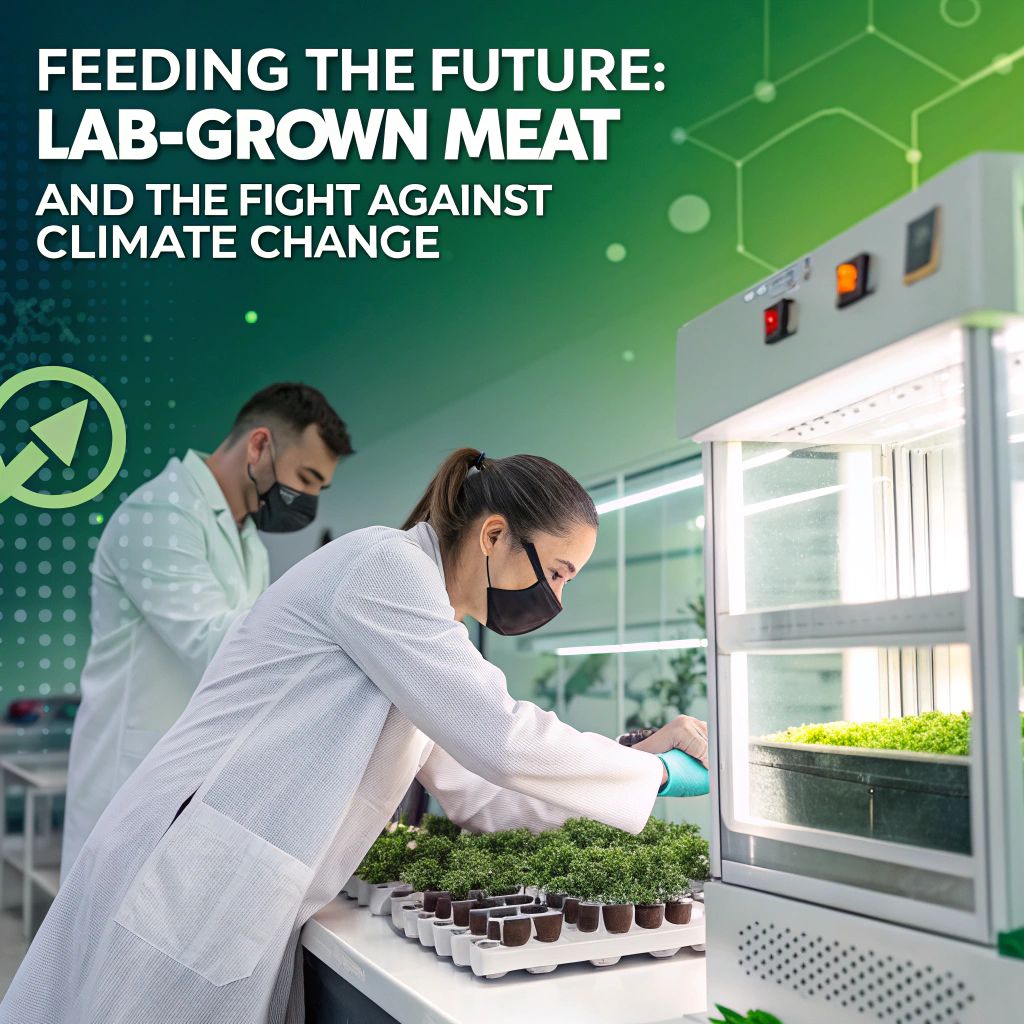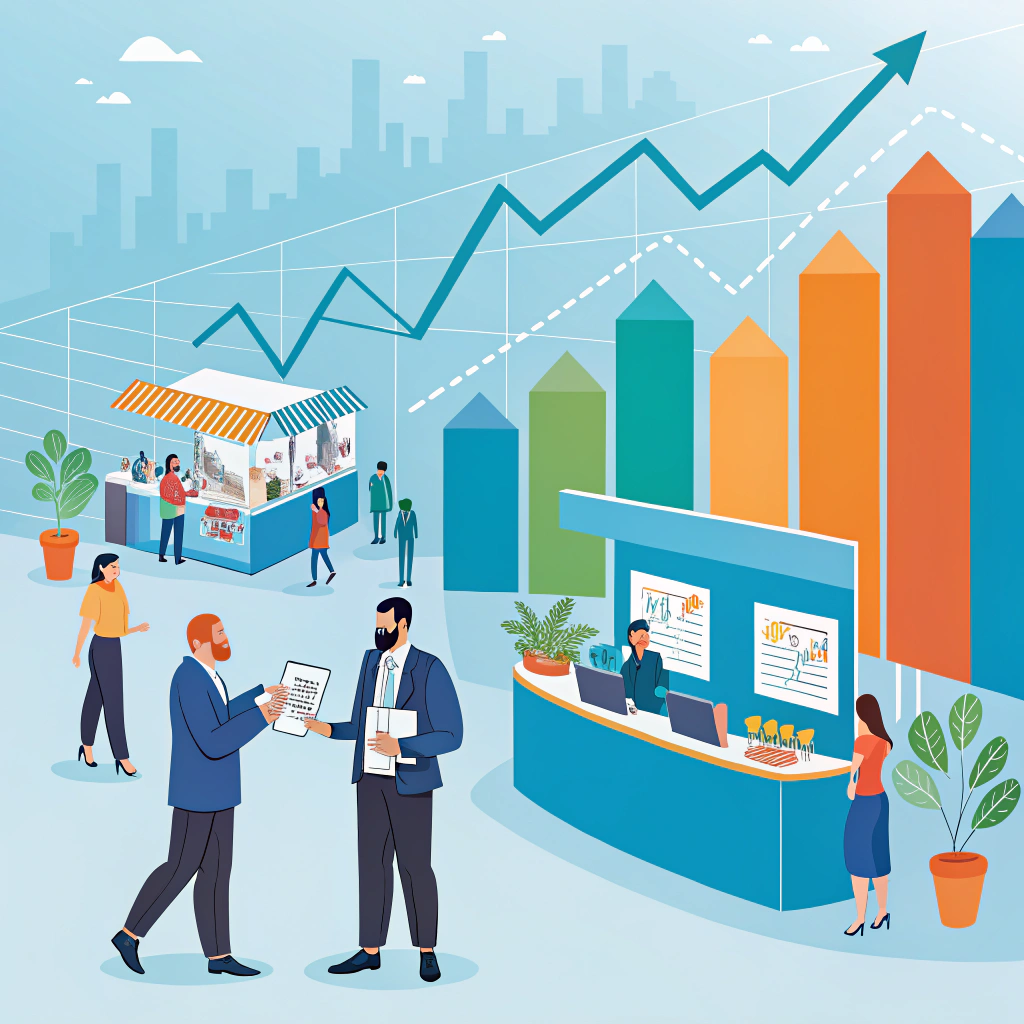Feeding the Future: Lab-Grown Meat and the Fight Against Climate Change
Introduction
The global food system is at a crossroads. As the world population approaches 10 billion by 2050, the demand for protein is skyrocketing. Yet, conventional livestock farming—the primary method of meat production—is one of the largest contributors to environmental degradation. It consumes vast amounts of land and water, emits greenhouse gases on a massive scale, and raises significant ethical concerns about animal welfare and food security. In the face of a growing climate crisis, one transformative solution has emerged from science labs across the globe: lab-grown meat.
Also known as cultivated meat, lab-grown meat is real meat produced from animal cells in controlled environments—without slaughtering animals. Beyond its ethical appeal, this technology promises a revolutionary shift in how we feed the planet while mitigating climate change. This article delves into how lab-grown meat is produced, its environmental impact, technological innovations, societal implications, and its role in the global effort to build a more sustainable food system.

1. The Climate Cost of Conventional Meat
The environmental footprint of traditional animal agriculture is vast and increasingly unsustainable.
A. Greenhouse Gas Emissions
Livestock farming contributes 14.5% of all human-induced greenhouse gas emissions, according to the United Nations’ Food and Agriculture Organization. Cows, in particular, produce large quantities of methane—a greenhouse gas that is 28 times more potent than carbon dioxide over a 100-year period.
B. Land and Water Use
- 77% of global agricultural land is used for livestock (grazing or feed production), but it produces only 18% of the world’s calories.
- Producing 1 kilogram of beef requires 15,000 liters of water.
- Deforestation, especially in the Amazon, is largely driven by cattle farming and soy production for animal feed.
C. Biodiversity Loss and Pollution
Runoff from livestock farms pollutes water sources, while overgrazing leads to soil degradation. Monocultures used for feed contribute to loss of biodiversity, and factory farms generate vast quantities of manure that can contaminate ecosystems.
As global meat consumption increases, especially in developing countries, the environmental toll is poised to worsen—unless alternatives emerge.
2. What Is Lab-Grown Meat?
Lab-grown meat, or cultivated meat, is produced by culturing animal cells in nutrient-rich environments. Instead of raising and slaughtering animals, only a small cell sample is required.
A. How It Works
- Cell Collection: A biopsy is taken from a live animal—usually stem cells that can develop into muscle or fat.
- Cell Cultivation: The cells are placed in a bioreactor and fed a growth medium containing amino acids, vitamins, sugars, and salts.
- Tissue Formation: As cells multiply, they differentiate into muscle fibers, fat, and connective tissue.
- Harvesting: Once mature, the tissue is processed into meat products—like burgers, nuggets, or even steaks.
The final product is biologically identical to conventional meat, with the same proteins, fats, and textures.
3. Environmental Benefits of Cultivated Meat
Numerous life cycle analyses suggest that lab-grown meat could drastically reduce the environmental impact of meat production.
A. Lower Greenhouse Gas Emissions
- A 2021 Oxford University study found that cultivated meat could cut greenhouse gas emissions by 78–96% compared to conventional beef.
- Since no methane-emitting animals are involved, methane output is nearly eliminated.
B. Reduced Land and Water Use
- Cultivated meat requires up to 95% less land and 78% less water than conventional meat.
- This frees land for reforestation, carbon sequestration, or more efficient crop production.
C. No Antibiotics, Hormones, or Manure
- Factory farms often use antibiotics, contributing to antimicrobial resistance.
- Lab-grown meat is produced in sterile environments with no need for antibiotics.
- Eliminating manure reduces the risk of water contamination and nitrous oxide emissions.
4. Technological Innovations Driving the Industry
A. Bioreactors and Scaffolding
Bioreactors are at the heart of lab-grown meat production, providing ideal conditions for cell growth. As the technology scales, companies are designing larger, more efficient bioreactors capable of growing tons of meat at a time.
Scaffolding—edible structures that guide the shape and texture of the meat—are also improving. These allow producers to replicate the complexity of whole cuts of meat, like steak or pork loin.
B. Growth Media Advancements
Originally, lab-grown meat relied on fetal bovine serum (FBS)—an expensive and controversial substance. Today, companies are developing plant-based and synthetic media that are cost-effective and ethically sound, bringing down production costs dramatically.
C. 3D Bioprinting
Some companies are using 3D bioprinting to layer cells in specific patterns, mimicking the marbling of a steak or the structure of fish fillets. This allows greater control over texture and culinary experience.
5. Market Momentum and Industry Leaders

The cultivated meat industry is growing rapidly, with over 150 startups worldwide working on commercial products.
Notable Companies:
- Upside Foods (USA): Received FDA approval in 2022 and focuses on chicken and beef.
- GOOD Meat (Eat Just, USA): The first to sell cultivated chicken in Singapore.
- Mosa Meat (Netherlands): Introduced the world’s first lab-grown burger in 2013.
- Aleph Farms (Israel): Specializes in cultivated steaks and has made significant strides in whole-cut meat.
- BlueNalu (USA): Leading the charge in lab-grown seafood.
These companies are attracting major investments from giants like Tyson Foods, Cargill, Bill Gates, Richard Branson, and SoftBank.
6. Regulatory Landscape
Singapore: The First Approver
In 2020, Singapore became the first country to approve cultivated meat for sale, leading the world in regulatory innovation.
United States: Growing Support
In 2022 and 2023, the FDA and USDA approved lab-grown chicken from Upside Foods and GOOD Meat for commercial sale. The U.S. is now emerging as a major hub for cultivated meat development.
Europe and Beyond
The European Food Safety Authority (EFSA) is currently evaluating applications, though the EU’s cautious stance on novel foods may delay widespread approval. Meanwhile, Israel, China, and Qatar are heavily investing in this technology as a food security strategy.
7. Consumer Perception and Market Challenges
Despite the promise, public acceptance of lab-grown meat is still evolving.
A. The “Yuck” Factor
Some consumers see cultivated meat as unnatural or “Frankenfood.” Overcoming this perception will require:
- Clear labeling
- Transparency about production
- Engaging storytelling around sustainability and ethics
B. Cost and Accessibility
As of 2024, lab-grown meat is still more expensive than traditional meat. But prices are falling fast, and many experts predict price parity within the next 5–10 years, especially with government subsidies and economies of scale.
C. Taste and Texture
Early versions of lab-grown meat struggled with flavor and mouthfeel. Recent advancements in fat tissue cultivation, muscle fiber structuring, and chef collaborations are making lab-grown meat increasingly indistinguishable from the real thing.
8. Ethical and Social Implications

Lab-grown meat raises profound ethical questions.
A. Animal Welfare
Cultivated meat could end factory farming, sparing billions of animals from suffering. One cell sample could produce thousands of pounds of meat without additional harm.
B. Religious Considerations
Can lab-grown meat be halal or kosher? Scholars and religious authorities are exploring this. If the original animal and ingredients meet religious standards, many believe the meat can qualify—offering new ethical alternatives for observant consumers.
C. Labor and Agriculture
As cultivated meat becomes mainstream, livestock industries and rural economies may be disrupted. Transition plans are essential:
- Job retraining programs
- Alternative rural economies
- Public investment in food tech education
9. Lab-Grown Meat vs. Plant-Based Alternatives
Plant-based proteins (like Beyond Meat and Impossible Foods) are often seen as competitors, but they serve different functions.
| Feature | Lab-Grown Meat | Plant-Based Meat |
|---|---|---|
| Source | Animal cells | Plants (e.g., soy, pea) |
| Taste/Texture | Nearly identical to real meat | Similar, but different |
| Nutrition | Matches conventional meat | Varies, can be lower in fat |
| Environmental Impact | High initial, but scalable | Already lower than meat |
| Consumer Perception | Still unfamiliar | Gaining acceptance |
Both will likely coexist, giving consumers diverse sustainable options.
10. A Climate-Resilient Food Future
Lab-grown meat isn’t just a technological marvel—it’s a climate action strategy. Here’s how it contributes:
- Carbon Emissions Reduction: By replacing methane-intensive livestock.
- Land Rewilding: Allowing forests and wetlands to recover.
- Water Conservation:

